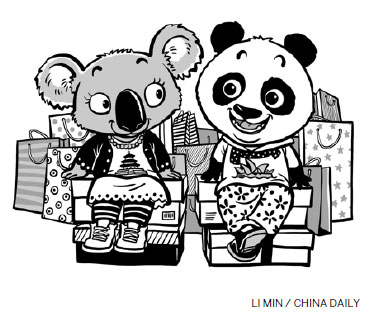
China and Australia signed a preliminary free trade deal on Monday that will make 85 percent of all Australian exports to China tariff-free from the outset and raise it to 93 percent before 2019. The deal, once takes effect next year, would give Australia's service industry greater access to the Chinese market and its agricultural sector advantage over competitors such as the United States.
The importance of the deal can be gauged from the volume of trade between China and Australia, which grew from $86 million in 1972 when the countries established formal ties to $136 billion last year.
China and Australia have gone from strength to strength over the past more than four decades and China is now Australia's largest trading partner, largest export destination and largest source of imports. And President Xi Jinping's visit to Australia has not only boosted Sino-Australian ties, but also taken it to a new high level.
China and Australia have gone through different phases in their economic partnership. First, they had the commodities' trade phase, where Australia exported "rocks and crops" (resources and agriculture) to help China's industrialization and urbanization as it pulled millions of people out of poverty. For Australia, it was both a "mining boom" and a "dining boom".
Then they developed, and advanced manufacturing and professional services and foreign investment started to flow both ways. The second-and third-tier cities of China such as Chengdu, Chongqing and Wuhan started attracting Australian builders, architects and designers as they invested in infrastructure to meet the needs of the rapid rural-urban migration and growing middle class consumers. Now Brisbane architects like Place Design are based in Chengdu to build landscape gardens.
Now we are seeing a new phase with the development of financial services and other forms of cooperation, such as the conversion of the Chinese yuan to Australian dollars, a new free trade agreement (FTA) and potential Australian support for the China-led Asian Infrastructure Investment Bank, following in the tradition of Canberra's strong support to Beijing on major international issues since former Australian leader Edward Gough Whitlam visited China in 1971. Australia supported China's bid to join the World Trade Organization, and has been backing it in the Asia-Pacific Economic Cooperation and G20.